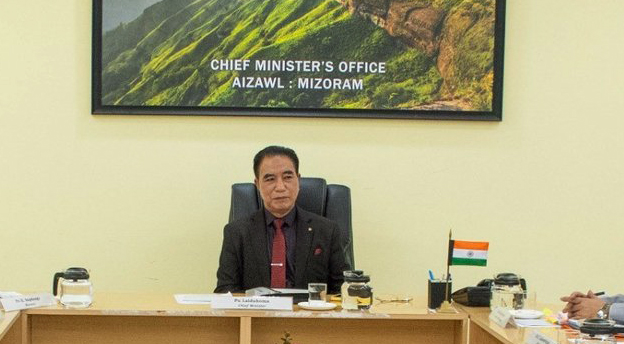Mizoram Chief Minister Lalduhoma expressed optimism following discussions in Delhi, stating, “In view of the responses I received in Delhi, I feel that we have nothing to worry about,” according to a statement from the Mizoram Chief Minister’s Office (CMO).

According to The Print, the statement comes after Lalduhoma met with Union Home Minister Amit Shah to urge him not to construct a fence on the Mizoram side of the India-Myanmar border, even if fencing is implemented on the Manipur side.
Lalduhoma’s appeal to exclude Mizoram from the proposed border fencing comes amidst growing opposition from the state’s NGO Coordination Committee (NGOCC), which has declared intentions to protest against the move.
“The state government is opposed to erecting a fence along the Mizoram-Myanmar border and also wants the Free Movement Regime (FMR) to stay,” Lalduhoma emphasized during a meeting with the NGOCC. FMR, introduced by the Modi government, permits tribes along the border to travel up to 16 km inside the other country without a visa. The proposed border fencing would impede this freedom of movement.
Lalduhoma denounced the current international border as an imposition by the colonial British government under the “divide and rule” policy. He expressed a fervent desire for reunification under a single administrative unit.
Home Minister Shah had previously announced plans for border fencing along the entire 1,643 km India-Myanmar border, citing security concerns amid allegations of insurgent groups fueling ethnic violence between Manipur’s Valley-based Meiteis and the hills-based Kuki tribes.
The NGOCC, comprising influential organizations such as the Young Mizo Association (YMA), Mizo Hmeichhe Insuihkhawm Pawl (MHIP), Mizoram Upa Pawl (MUP), Mizo Zirlai Pawl (MZP), and Mizo Students Union (MSU), has announced protests against the proposed border fencing in Aizawl on 21 February.
Chairman Lalhmachhuana, leading an NGOCC delegation, affirmed their commitment to proceed with the planned protests, stating that they had coordinated with civil societies in Nagaland and conveyed their stance to both the Centre and the state government.



